The Clusia plant, a remarkable and diverse species, has become a prominent feature in both home gardens and professional landscapes.
Known for its striking, glossy leaves and robust nature, the Clusia plant encompasses varieties like Clusia Guttifera and Clusia Rosea, each boasting unique characteristics.
Originating from tropical regions like the Caribbean and South America, these plants have adapted to various environments, making them a versatile choice for gardeners and landscapers.
Clusia plants are not just aesthetically pleasing but also functional, often used as hedges or privacy screens due to their dense foliage.
Their adaptability extends to various soil types and conditions, with a notable tolerance for drought, making them a low-maintenance option with minimal upkeep for those seeking greenery.
This guide delves into caring for Clusia plants, encompassing aspects such as planting, watering, soil requirements, and overall maintenance.
Understanding these elements is key to nurturing these plants and ensuring their healthy growth and vibrant appearance.
Clusia Hedge (Guttifera)
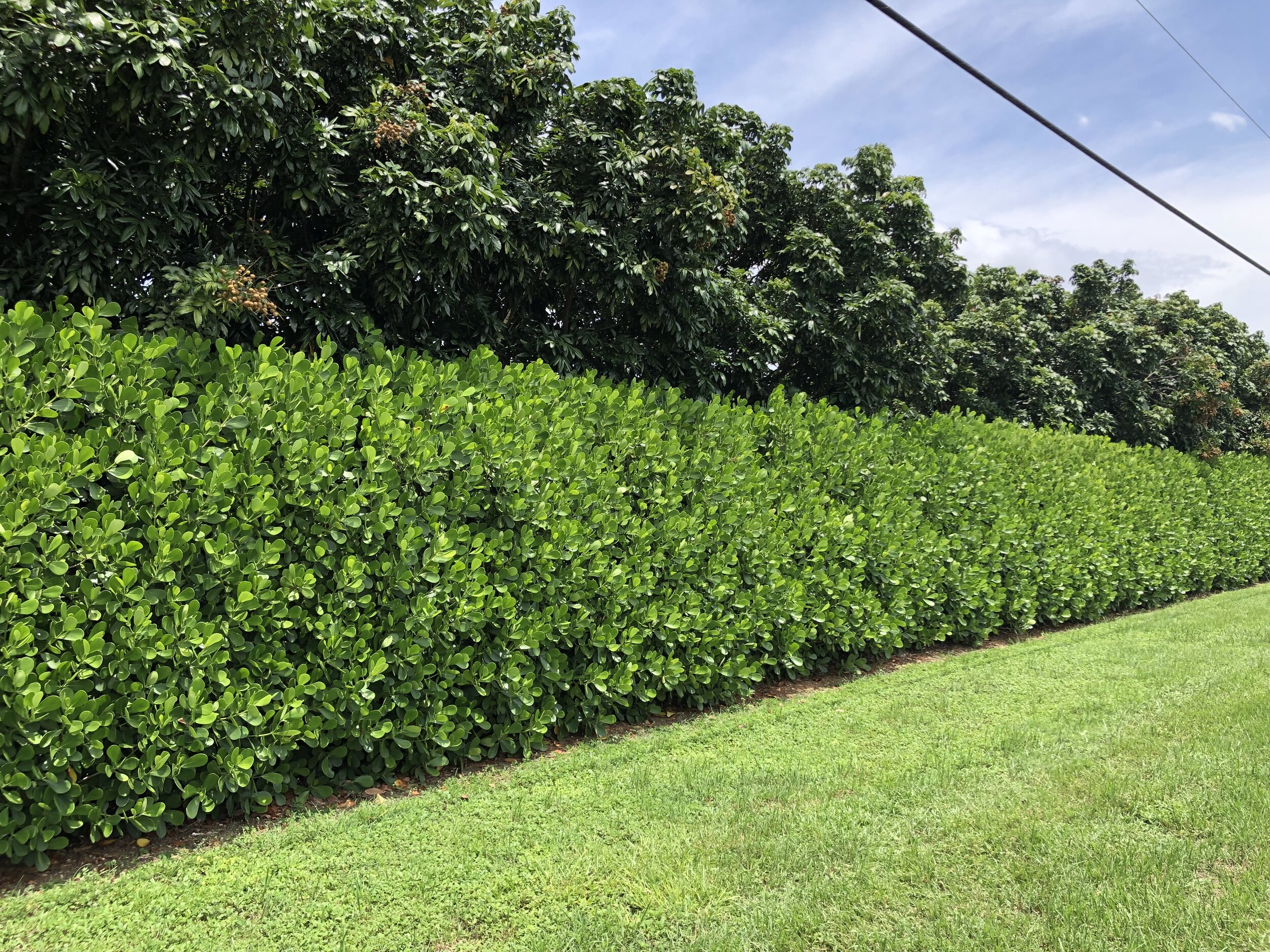
The Clusia hedge, a robust and versatile plant, stands out for its thick, glossy leaves and dense growth habit.
Originating from the Caribbean and parts of South America, it’s a popular choice for hedges in tropical and subtropical regions.
The leaves are its most striking feature: large, leathery, and oval-shaped, with a rich, deep green color.
They often measure 4 to 6 inches in length, contributing to the hedge’s lush, full appearance.
Highly adaptable, the Clusia hedge thrives in various soil types, though it prefers well-drained conditions.
It’s notably drought-tolerant, making it a low-maintenance option for gardeners in drier climates.
Sunlight is another factor in its growth; while it can tolerate partial shade, the Clusia hedge flourishes in full sun, achieving optimal density and leaf color.
How to Care for Clusia Hedge?
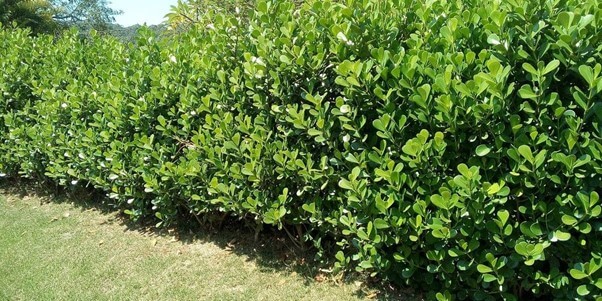
Clusia hedge (Guttifera) is found in tropical countries. These shrubs grow with lower branches that are very close to the ground.
The plants grow up to 7.5 m and have to be trimmed regularly. These clusia hedges are superb for landscaping because of their glossy green texture.
These plants can be planted along with fences that serve as a privacy screen.
These plants also grow well in containers, buckets, etc. The clusia hedges need adequate sunlight for around six to eight years.
Water the plant regularly so it thrives under the Sun’s heat and in partial shade.
Soil
Clusia Guttifera hedges, known for their low maintenance and adaptability, flourish in fertile soil with efficient drainage.
While these plants are hardy and require minimal care, soil quality is crucial for their proper growth.
They are often found in coastal areas, where they adapt well, even to less fertile conditions.
It’s essential to ensure that the soil where Clusia Guttifera is planted has good drainage.
Poor drainage can hinder the plant’s growth, making it vital to improve the soil’s drainage capabilities if necessary.
Over-fertilization is a common mistake to avoid. Excessive use of fertilizers or chemicals can be detrimental rather than beneficial.
It’s important to apply these in moderation, adhering to recommended quantities.
This approach not only supports the plant’s growth but also helps maintain the necessary soil moisture, which is vital for the health of the Clusia Guttifera.
Water
Watering Clusia Guttifera plants daily is essential despite their drought-resistant nature.
Regular watering keeps the roots hydrated, crucial for the plant’s health and growth.
This is particularly important in the initial stages after planting.
Clusia hedges, which come in various types, generally require consistent watering to thrive.
In the first year following planting, providing approximately 5 liters of water for every meter of hedge is recommended.
This ensures that the plants establish a strong root system.
Temperature
Clusia Guttifera hedges thrive in sunlight, making them particularly well-suited for growth in the summer season.
They require a temperature range of -1 ° to 10° Celsius to grow effectively.
Additionally, these plants favor high humidity levels, around 50%, further underscoring their suitability for outdoor environments during warmer months.
Therefore, keeping Clusia Guttifera hedges outdoors during the summer is advisable.
This exposure to natural sunlight and appropriate humidity levels is key to their health.
If there are concerns about the plant’s well-being, ensure these environmental conditions include adequate sunlight, suitable temperature range, and high humidity.
These factors significantly contribute to the robust health of Clusia Guttifera hedges.
How to Plant Appropriately?
Taking care of the Clusia Guttifera hedges is not a big deal, but remember to kick start your plant journey with little healthy shrubs.
Bring enough Clusia Guttifera plants for a beautiful and healthy hedgerow.
Before planting, ensure the soil is fertile and has a proper drainage system.
For a formal hedgerow plant, the small shrubs at 1.2 m. You may also wish to have an informal hedgerow.
For that, you can place your plants farther apart from each other.
Dig holes deep so that the roots of the plants can adequately fit inside. Place the plants inside the deep hole and cover the remaining portion with soil.
Maintenance
These Clusia Guttifera hedges do not need much trimming. These are to be trimmed to maintain a formal shape.
Trimming is done to encourage more plant growth. These plants usually respond well in case of light trimming.
Trimming properly would help the plants to develop a beautiful square shape. This also ensures a dense and natural privacy screen throughout.
Clusia Tree (Rosea)
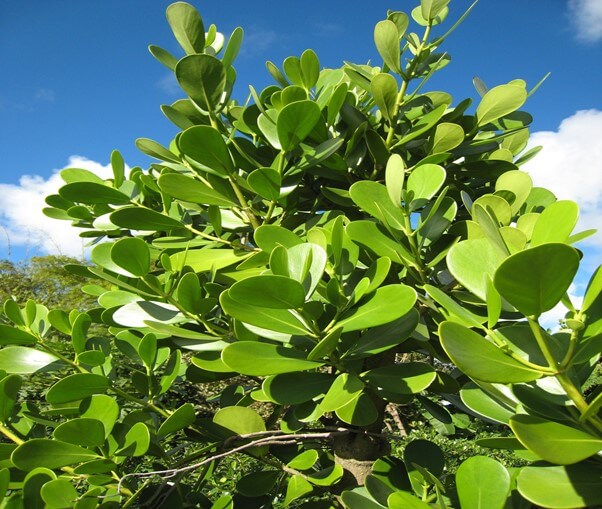
Clusia rosea is another variety. It is a large but medium-sized flowering tree with the same bushy leaves.
These Clusia rosea trees are found in tropical America. It is also known as an autograph tree or pitch apple.
These Clusia rosea trees grow up to 20 m tall. The color of the leaves is olive green and oval.
These trees do not require much care and have low maintenance costs. These Clusia rosea trees work very well as hedges, shades, etc. These trees do not grow so big.
It grows as small to medium-sized trees. You can also grow these trees as a wide shrub.
How to Care for Clusia Tree?
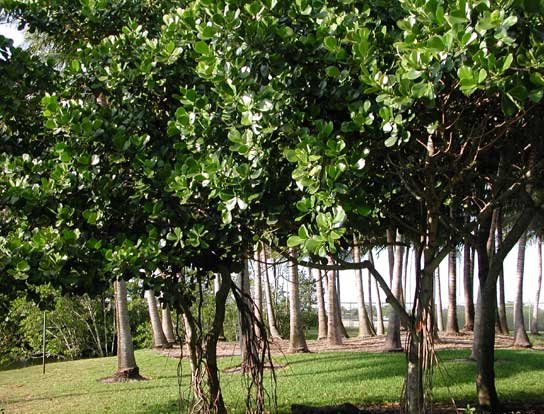
Clusia rosea trees are also known as Balsam apples. These trees are mostly found in parts of Central America.
Clusia rosea performs best under bright sunlight (outdoors).
You may keep your small tree indoors and make sure that the tree is kept somewhere where the sunshine is available.
Watering should not be done frequently. Water the soil only after it has dried out.
These trees have the quality to tolerate short periods of drought. The drainage system should be fair, along with fertile soil.
Clusia rosea prefers the summer season rather than the winter.
It can also tolerate a high amount of humidity. These trees produce flowers during the late spring and grow soon.
Soil
For optimal growth, Clusia rosea plants require soil that is both fertile and well-draining.
The method of planting is crucial and should be done in a manner that promotes the health and happiness of the plant.
When planting Clusia rosea, avoiding poor draining soil is important, as this can lead to root rot.
Such an occurrence can be distressing for both the plant and the gardener. Ensuring good drainage is key to preventing this issue.
Typically, when purchasing a Clusia rosea, you’ll find it already potted in soil.
It’s unnecessary to transplant it from the pot immediately unless the roots have begun to outgrow the space.
This can be determined by checking for visible root growth.
At this stage, repotting or planting in a new location can be considered to provide the plant with adequate space to continue its growth.
Water
These plants love to cuddle in moist conditions but never choose to overwater.
Watering should be done thoroughly in the topsoil only after the soil has dried up.
Do water the plants continuously until the water flows out of the bottom holes.
Make sure the plant roots are never in full water inside the pot.
This is harmful to the roots of the Clusia rosea plants. You need not worry about the water quality because these plants are okay with all types of water.
So, tap water is sufficient for watering these plants. The only thing to remember is never to water the plants.
It is dangerous for the roots! If your soil takes longer to dry up than usual, this might be the first sign of root rotting.
Bring big pots for Clusia rosea plants with several drainage holes below them.
In winter, the soil needs less water because it takes time to dry out.
And until and unless your soil is drying, you cannot water them again.
Temperature
The preferred temperature of these Clusia rosea plants is between 15° to 30° Celsius.
These plants cannot tolerate cold weather, so if you keep your plant indoors, avoid keeping it in an air-conditioned room. This will harm the health of the plant.
Some plants cannot survive in direct sunlight, but Clusia rosea is happier when under direct sunlight.
Place your plant near a south-faced window right from its young age if you keep it indoors.
This will enable the little plants to become more tolerant towards direct sunlight.
This practice is essential from a very young age because you might think of keeping the plant outdoors once it grows.
At that time, the plant will face problems, and you will get specific disappointing results, such as brown leaves, tips, etc.
When your plant was kept indoors, it did not have the habit of facing direct sunlight, so without any practice, the plant leaves get burned when exposed to direct light outside.
How to Plant Clusia Tree Appropriately?
Flowering
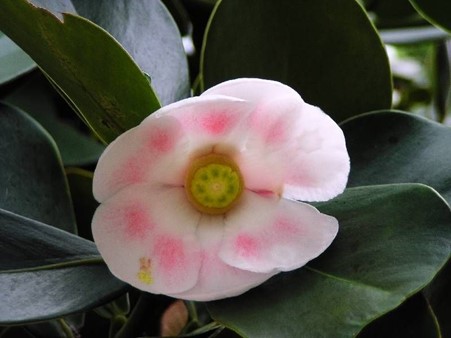
Clusia rosea plants bear flowers, but it is more likely to occur whenever the plants are placed outdoors rather than kept indoors.
This happens due to lower sunlight inside the house; you can never have as much sunlight outside.
To ensure flowering, the plants need bright sunlight, proper watering, and perfect amounts of fertilizers.
The plants produce white and pink flowers in late spring and early summer.
These flowers last for several weeks and close during the day due to heat and are open at night.
Clusia rosea also produces fruits. These fruits are small green balls that look like apples.
The color changes and turns into black, a ripening symbol.


I am getting black spots in my calusia leaves…any recommendations of a certain fungicide to use? Would tmethyl work?
The roots of the clumsily are fast growing and heading to my foundation.
Is there a problem with roots affecting the house or pool?
.
Are the Claudia plants deer resistant?
What’s the best / easiest way to deal with / remove / kill St. Augustine grass growing along a new Clusia hedge line in South Florida?
My Clusia are very leggy. I have cut them back a few times; the last about 12 inches but didn’t help. Any advise on what I should do?